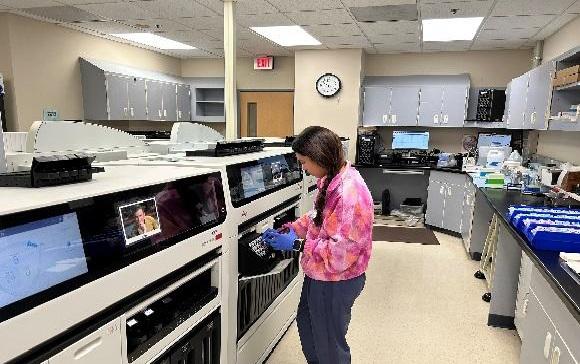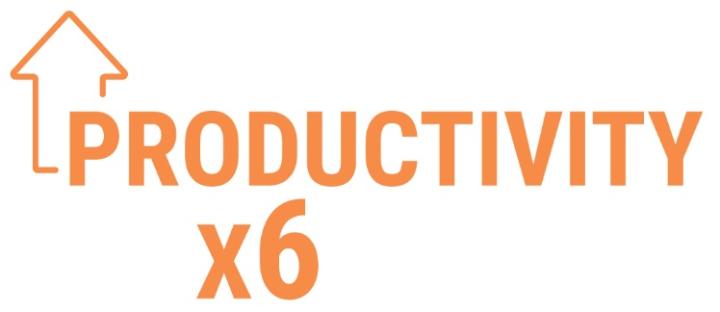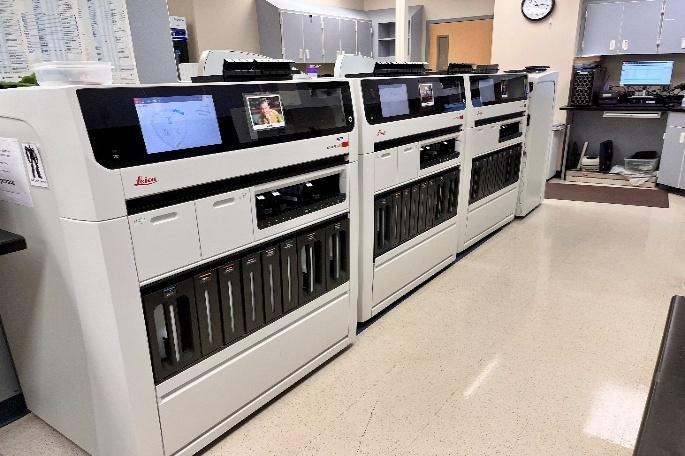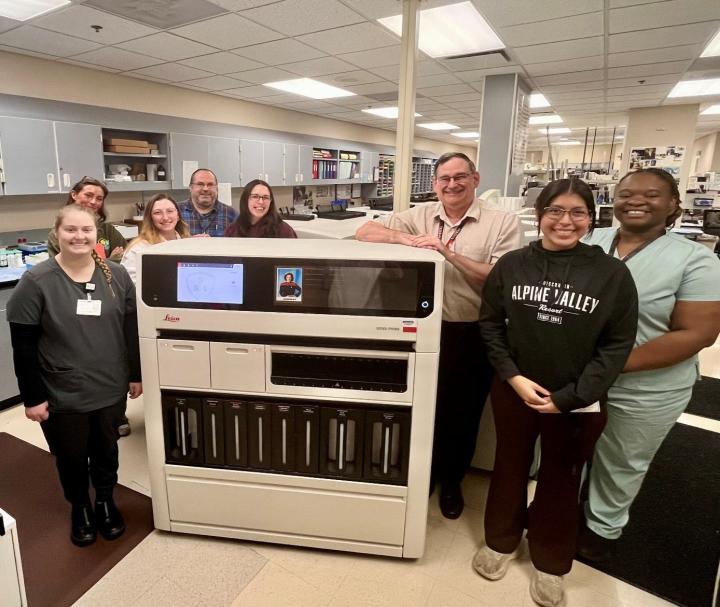
BOND-PRIME IHC/ISH Stainer – A Catalyst for Change


BOND-PRIME IHC/ISH staining system's continuous workflow replaces restricted batch processing

“We moved from a 36-hour batching turnaround time on IHC stains to a 5-hour TAT with continuous flow”
A quiet revolution has taken place in anatomic pathology at Wisconsin Diagnostic Laboratories, Froedtert Hospital, Milwaukee, USA.
Led by Chris Bradley, Manager of the Anatomical Pathology Division, this tightly knit team has fundamentally changed the way their service operates. This has been made possible by a partnership with Leica Biosystems and their BOND-PRIME IHC/ISH staining system.
The IHC team immediately saw the potential of technological advances such as Universal Access offered by BOND-PRIME. It was the catalyst to convert their 24-hour/5-days-a-week pathology service into a continuous case load workflow, with request-to-send-out turnaround time (TAT) capable of hitting five hours, a reduction of almost 85%.
As Chris explained: “It’s an exceptional story. We moved from a 36-hour batching turnaround time on IHC stains to a 5-hour TAT with continuous flow. BOND-PRIME is a total home run.”
BOND-PRIME Performance Highlights

- Greater overall efficiency
- Switched from batch to 24/5 continuous workflow
- Reduced TAT by almost 85%
- Increased workload volume by almost 150%
- Improved productivity to six times faster
- Reduced costly wastage
- Enhanced staff morale
- Increased available test menu by almost 100%
- Expanded research service
- Boosted annual capacity up to 200,000 slides
Commenting on overall efficiency improvements, Chris said; “Previously we had to focus our working day around two staining batches, with a daily request cut-off of 10am. Now, everything is streamlined and so easy. The technology demonstrated its advantages from the start.”
Previously, the laboratory had six IHC/ISH stainers, primarily run in batch mode, so they were only able to handle IHC requests at specified times of the day. The lab frequently had to contend with bottlenecks whenever batched requests were received.
Initially, the team trialled introducing one BOND-PRIME IHC/ISH stainer to assess the impact on their existing batch workflow. Having completed the menu validation on BOND-PRIME one month after installation, the disparity between the two technologies was immediately apparent and inspired a “root-and-branch” change to how the lab operated.
" Everything is streamlined and so easy "
Flexible way of working

IHC Technical Specialist Marcus Anderson was tasked with leading the plan for change – from that initial trial installation to the overall workflow improvements.
The rigid protocols required by batch processing were quickly moved aside so that the AP team could fully embrace a different, more flexible way of working. “Capacity increased overnight. We all quickly saw how robustly the BOND-PRIME performed, with its continuous slide loading technology consistently delivering an improved TAT,” Marcus explained. “That gave staff at all levels the confidence to engage with the challenge of new working practices.”
With a continuous processing workflow, there is no need for slides to wait on the bench. The lab can now handle an increase in frequency of requests throughout the day without the stress of being overloaded or risking the sort of bottleneck that occurred under the old batch system. The BOND-PRIME technology enables the lab to handle “any slide, in any combination, with any reagent at any time.”
Marcus was the facilitator for the lab to expand further, overseeing a move from a single BOND-PRIME IHC/ISH stainer to the addition of a further three instruments. With four BOND-PRIME IHC/ISH stainers now in place alongside the previous batch stainers, the AP service in 2024 handled around 160,000 slides a year, but this year is on track with the capacity to handle up to 200,000.
BOND-PRIME reduced waste and freed up time to validate new stains
Marcus is also responsible for the lab’s research division. Along with the extra BOND-PRIME stainers, the lab also purchased a BOND RX, allowing Marcus to work with outside vendors to develop new molecules and antibodies – and is currently developing a 16-slide rare-cancer panel.
“The BOND-PRIME advanced technologies are already helping us to expand the research side of the WDL business,” he said.
The new workflows have freed up Marcus’ time so that he can develop these other activities to further benefit the lab’s revenue generation. Previously, there was no spare capacity to do this. In addition, he has been able to take advantage of professional development opportunities to expand his own skills.
Marcus is rightly proud of what the BOND-PRIME is already helping them achieve. “The ability it has given us is amazing, freeing up so much time to validate new stains so that we can help our patients more quickly,” he added.
The BOND-PRIME has also led to reduced wastage, especially when ordering markers. “Previously, pathologists were obliged to request extensive catch-all panels to cover what might be needed for diagnosis,” Marcus explained. “Once we switched to a continuous slide loading workflow, pathologists could tailor far more precisely which markers were required as initial requests were received quickly, allowing for 2nd and 3rd round requests, if required, to potentially be processed the same day.”


BOND-PRIME had significant impact on Wisconsin Diagnostic Laboratories' clinical oncology services
The lab's improved efficiency has had a significant impact on their oncology service. As Chris pointed out, "Our oncology department is just head over heels for what we are doing. Now offering 300+ antibodies, we can support our clinicians by turning around patients results in 48 hours from diagnosis to treatment."
The Wisconsin lab is the referral center for the 15-lab WDL network, serving not only its hospital clinicians but operating as an outreach and research lab. With productivity levels rising, and staff morale hitting record heights, the four BOND-PRIME stainers have enabled the lab to easily manage higher workloads. This has opened the door to expanding their wider services as well bringing in-house those tests previously outsourced.
As Chris concluded, "With this level of performance and demand for our services, we'll need to look at buying more BOND-PRIME stainers."

This case study was created in collaboration with the Anatomical Pathology team at Wisconsin Diagnostics Laboratories, Milwaukee, WI, USA. We’d like to express our particular thanks for their contributions:

Leica Biosystems 콘텐츠는 Leica Biosystems 웹사이트 이용 약관의 적용을 받으며, 이용 약관은 다음에서 확인할 수 있습니다. 법적고지. 라이카 바이오시스템즈 웨비나, 교육 프레젠테이션 및 관련 자료는 특별 주제 관련 일반 정보를 제공하지만 의료, 규정 또는 법률 상담으로 제공되지 않으며 해석되어서는 안 됩니다. 관점과 의견은 발표자/저자의 개인 관점과 의견이며 라이카 바이오시스템즈, 그 직원 또는 대행사의 관점이나 의견을 나타내거나 반영하지 않습니다. 제3자 자원 또는 콘텐츠에 대한 액세스를 제공하는 콘텐츠에 포함된 모든 링크는 오직 편의를 위해 제공됩니다.
모든 제품 사용에 다양한 제품 및 장치의 제품 정보 가이드, 부속 문서 및 작동 설명서를 참조해야 합니다.
Copyright © 2025 Leica Biosystems division of Leica Microsystems, Inc. and its Leica Biosystems affiliates. All rights reserved. LEICA and the Leica Logo are registered trademarks of Leica Microsystems IR GmbH.